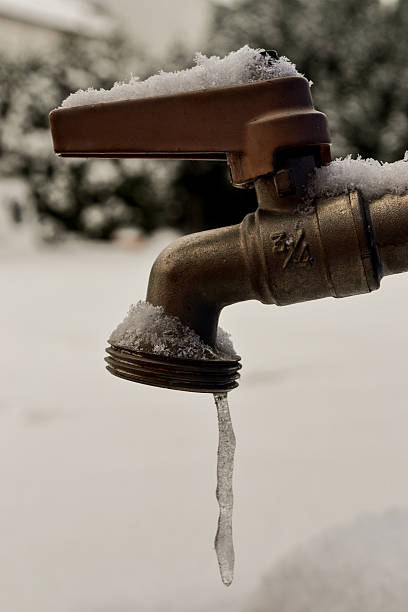Crucial Advice for Avoiding Frozen Pipes in Cold Weather Seasons
Crucial Advice for Avoiding Frozen Pipes in Cold Weather Seasons
Blog Article
What are your opinions regarding Helpful Tips to Prevent Frozen Pipes this Winter?

Cold weather can ruin your plumbing, particularly by freezing pipelines. Here's exactly how to prevent it from taking place and what to do if it does.
Intro
As temperatures decrease, the risk of frozen pipelines increases, possibly leading to expensive repairs and water damage. Recognizing how to avoid frozen pipelines is crucial for property owners in cool environments.
Prevention Tips
Protecting prone pipelines
Wrap pipes in insulation sleeves or make use of heat tape to secure them from freezing temperatures. Focus on pipelines in unheated or exterior locations of the home.
Home heating strategies
Maintain interior areas properly heated, particularly areas with pipes. Open up cabinet doors to enable warm air to distribute around pipelines under sinks.
How to identify frozen pipes
Try to find reduced water circulation from taps, uncommon smells or sounds from pipelines, and visible frost on revealed pipelines.
Long-Term Solutions
Architectural changes
Take into consideration rerouting pipelines far from exterior walls or unheated areas. Include additional insulation to attics, cellars, and crawl spaces.
Updating insulation
Invest in premium insulation for pipes, attic rooms, and wall surfaces. Proper insulation aids keep constant temperatures and lowers the danger of frozen pipelines.
Safeguarding Exterior Plumbing
Yard pipes and outdoor taps
Detach and drain pipes garden hose pipes prior to winter. Set up frost-proof faucets or cover outdoor faucets with protected caps.
Recognizing Frozen Pipes
What triggers pipelines to freeze?
Pipes freeze when subjected to temperature levels listed below 32 ° F (0 ° C) for extended periods. As water inside the pipes freezes, it broadens, putting pressure on the pipeline wall surfaces and possibly triggering them to rupture.
Dangers and problems
Frozen pipelines can bring about water system disturbances, residential or commercial property damages, and costly repairs. Ruptured pipelines can flooding homes and create substantial architectural damage.
Signs of Frozen Pipes
Identifying icy pipes early can prevent them from breaking.
What to Do If Your Pipelines Freeze
Immediate actions to take
If you suspect icy pipes, keep taps available to alleviate stress as the ice melts. Make use of a hairdryer or towels soaked in warm water to thaw pipes gradually.
Conclusion
Protecting against frozen pipelines requires aggressive measures and fast responses. By understanding the causes, indicators, and preventive measures, house owners can protect their plumbing throughout winter.
5 Ways to Prevent Frozen Pipes
Drain Outdoor Faucets and Disconnect Hoses
First, close the shut-off valve that controls the flow of water in the pipe to your outdoor faucet. Then, head outside to disconnect and drain your hose and open the outdoor faucet to allow the water to completely drain out of the line. Turn off the faucet when done. Finally, head back to the shut-off valve and drain the remaining water inside the pipe into a bucket or container. Additionally, if you have a home irrigation system, you should consider hiring an expert to clear the system of water each year.
Insulate Pipes
One of the best and most cost-effective methods for preventing frozen water pipes is to wrap your pipes with insulation. This is especially important for areas in your home that aren’t exposed to heat, such as an attic. We suggest using foam sleeves, which can typically be found at your local hardware store.
Keep Heat Running at 65
Your pipes are located inside your walls, and the temperature there is much colder than the rest of the house. To prevent your pipes from freezing, The Insurance Information Institute suggests that you keep your home heated to at least 65 degrees, even when traveling. You may want to invest in smart devices that can keep an eye on the temperature in your home while you’re away.
Leave Water Dripping
Moving water — even a small trickle — can prevent ice from forming inside your pipes. When freezing temps are imminent, start a drip of water from all faucets that serve exposed pipes. Leaving a few faucets running will also help relieve pressure inside the pipes and help prevent a rupture if the water inside freezes.
Open Cupboard Doors
Warm your kitchen and bathroom pipes by opening cupboards and vanities. You should also leave your interior doors ajar to help warm air circulate evenly throughout your home.

I discovered that blog posting on How To Avoid Freezing Pipes when doing a lookup on the web. Sharing is caring. You just don't know, you may be helping someone out. I thank you for reading our article about How To Avoid Freezing Pipes.
This Website Report this page